THE COST OF RACING: FORMULA VEE

Formula Vee celebrated its 55th anniversary in Australia and to this day remains one of the most affordable and competitive categories. Still a great training ground for young drivers. Dan McCarthy investigates the costs to compete.
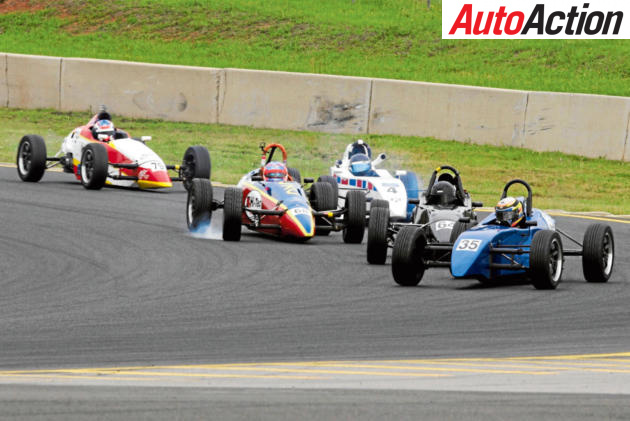
The Formula Vee championship has remained a staple of national racing and state racing since the mid-60s.
With its basis built around reliable and cheap Volkswagen componentry, Formula Vee quickly became a popular budget-priced series and has remained so to this day.
The category has also been a first stepping stone to more professional racing such as the Australian Touring Car Championship and internationally, even Formula 1.
Larry Perkins, John Bowe and Jason Bargwanna all started racing in Vees and it also been a stepping stone to Formula Ford, the more widely acknowledged driver development class, as demonstrated by Cameron Waters and Jack Le Brocq.
In the last two decades the vast majority of state Vee series’ have made the switch from the original 1200cc to the larger 1600cc engine, though the smaller capacity cars now form a sub-class in the overall category.
Formula Vee was created to benefit good drivers rather wallet size and this means that anyone with talent will find themselves up the pointy end of the field.
The Victorian Formula Vee association president Nicholas Kerr spoke with Auto Action about the cost of racing in the category.
According to Kerr the newest and most high tech Vee is the Sabre 02 which has become very popular with competitors nationally.
However, Kerr says you don’t need to fork out big bucks as most drivers purchase second hand cars.
“A new Vee will go for $35,000-$50,000 but you can get yourself into a budget Formula Vee for around $7,500. And for something that is relatively competitive and reliable, you are looking at the $15,000-$20,000,” Kerr said.
By contrast, Victorian state front-runner Jake Rowe was able to purchase his Sabre 02 chassis new thanks to a contra deal with the chassis manufacturer.
“We bought our chassis brand new, we spent probably 12-18 months putting the car together, everything in that car was brand new when we started,” Rowe explained to Auto Action.
“We were lucky enough to do a bit of a contra deal with the chassis manufacturer, Sabre, because we did all of its Formula Ford wiring. The Sabre 02 was $50,000-$55,000 brand new but we did ours for $30,000-35,000.”
Francois Habib also competes in the Victorian state series series and like the majority of his competitors, he has purchased a second hand car.
Habib’s machine cost $15,000 and was previously converted from a 1200cc car.
“Mine is pretty old but it has a lot of history. It is an Elliott MkII that has won five national titles and is a 1992 model, it came with spares including h-beams, rotors, pads, trailing arms,” Habib told AA.
Habib feels that a good way to dip your toe in the water is by borrowing a car for a round or two, it’s how he began racing in the series.
“For me that was a cheap way of getting into motorsport and without putting up the big investment of buying one,” Habib continued.
“I lease my own Formula Vee now. To lease a Formula Vee is $1000 for a weekend, if you add practice on Friday (it’s) $1200-1500. That provides a car in working condition with tyres sitting there, that is what I do. Some drivers lease cars for $3000 with a mechanic.”
Being an entry level category, cars do not run with telemetry and radios are also banned, while judicial cameras are optional.
If you have not raced previously you will need to purchase a race suit, gloves, boots, helmet and a HANS or similar device which in total costs around $3,000.
Then all you need to do is pour yourself a seat which will cost less than a yellow note ($50) and you are ready to go.
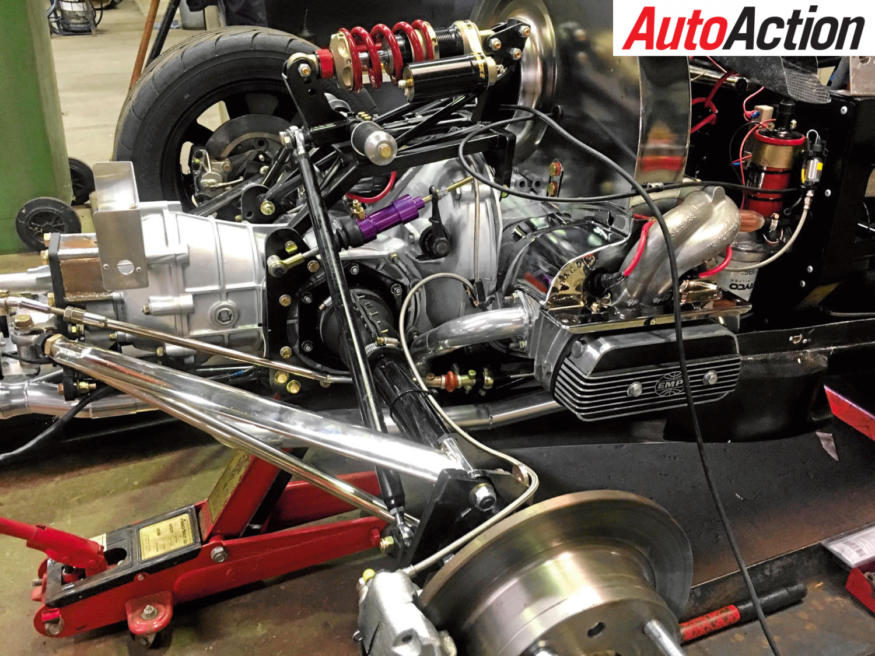
The 1600cc Volkswagen engine which propels the Vees produces up to 51kW and with a minimum car weight (including driver) of 500kg it certainly moves.
Kerr explained that competitors never buy new engines they simply rebuild their own instead.
“Most people would do a top end rebuild at the end of every season at around $1200-$1500,” he explained. “For a full engine rebuild you are looking at $2000-$2500 and you would do that every two or three seasons.”
“Some of the older cars have run the same bottom end for six or seven years, so when they take a piston out they will have a look at the crank and big end bearings and if it looks good they won’t worry about doing it.”
Rowe confirmed Kerr’s comments saying that since he started racing in the class, he has only used the one engine.
“I’m on year six with the same engine. At the start of last year I replaced the heads, but the cylinder head is still the original I’ve had for six years. If you look after them they will serve you well and you can keep run them for ages,” Rowe explained.
Rowe also addresses air filters, oil filters, fuel filters, brake fluid and clutch fluids at the end of a racing year.
Generally a number of services need to be performed to keep a race car at its peak performance and the Vee is no different. Generally an oil change needs to be made during the season and is recommended to be done when the top end is being rebuilt.
“The top guys may change it every meeting, but others may not change it all season. If you allow for one or two oil changes per season, that is probably ample,” Kerr said.
At one end of the spectrum Rowe performs a service every three meetings while Habib does not service his car and simply asks his mates for advice, to make sure everything is running as it should.
“I’d made friends there and now they look after the car on a race weekend for me.
I’d like them to do the servicing, setup and tuning etc on those, I’m more about getting in and driving,” Habib explained.
Before racing, begins the carburettor is restricted and sealed and the engine itself is also sealed in two spots. Another vital part of the car is of course the gearbox, and like the bottom end is serviced around once a year.
“The gearbox is around the $1200-1500 mark to get one rebuilt. You typically wouldn’t rebuild one unless you had to, you’d probably get two or three seasons from a gearbox, (while) clutches and diffs last forever in Formula Vee cars.”
Rowe removes the gearbox around every four meetings to check that it is working as it should, before servicing it at the end of each year.
“A gearbox service isn’t very much, most of the time it is just a gasket kit and some oil, so $200-$300,” he said.
Incredibly, he is still competing with the same gearbox he used when he first starting racing the pocket rocket category six years ago.
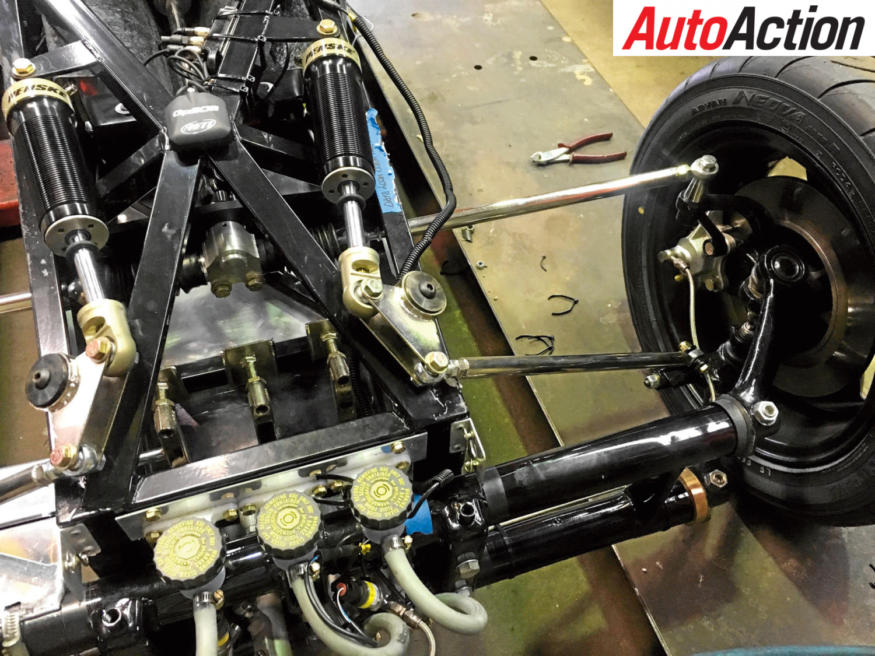
The suspension is one of the most complex parts of the vehicle but is still very affordable compared with most other racing categories.
“In the front end you have to run a Volkswagen H-beam, that is part of the control suspension. In terms of the shock absorbers you can run whatever you want on the front and on the back,” Kerr detailed to AA.
“Some run a Monoshock, some race with a spring over the top which is adjustable and others with a leaf spring that goes across the whole back end. A Sabre 02 has a Monoshock rear end while the earlier cars have leaf springs.
“The front end H-Beams break quite easily if you crash into a wall, so some people carry spares but a fully reconditioned H-beam around $500.”
Rowe runs Penske shockers simply because it is what the car came with and was designed around.
“I run Penskes that were supplied with the car. I get them serviced once a year by Les Small. Basically these shocks were made for these vehicles, so I’m not going to change a good thing,” Rowe said.
Across the nation in 2020 the Vees changed tyre brand from Yokahama to Dunlop. While the Yokahamas lasted a full season, it is expected that you will need to purchase two or three sets of the Dunlop tyres for a five-six round season.
A set of tyres costs $960 and Rowe, who previously drove on the same rubber six years ago, believes the front runners will buy a new set each meeting.
“Realistically if you are not gunning for a championship you could do three rounds on a set before they are gone. But there is quite a big advantage on a new set, anywhere between 0.2s-0.5s a lap,” Rowe explained.
Although the original Vees are over 50 years old, only the historic cars run drum brakes, whereas the modern cars run discs on the front and rear.
“You can do a season on a set of callipers, (in fact) you could probably do several. I change pads every half a year because I’m quite heavy on the brakes. I also change discs once a year but don’t have to,” Rowe continued.
A bingle in a Vee is a rare occurrence, but if you were to have a crash and damage the bodywork, the majority of the time you would mend it.
“The bodywork you typically repair yourself, you wouldn’t typically go and buy a new body,” Kerr began. “Typically a fibreglass repair kit would be the cost, if you really smashed the nose you would just go and find yourself a second hand one online for between $200 and $400, I’ve never seen anyone buy a new one.”
The exhausts are also pretty indestructible with drivers running the same one for many years without needing to change, the only expense in that zone being the muffler which can often break in a slipstreaming duel.
“The four into one collector is pretty indestructible,” Kerr said. “The mufflers do get damaged a bit because the racing is so close. A lot of time you can repair them but if you break one off then you have to buy a new one for $220-$240.”
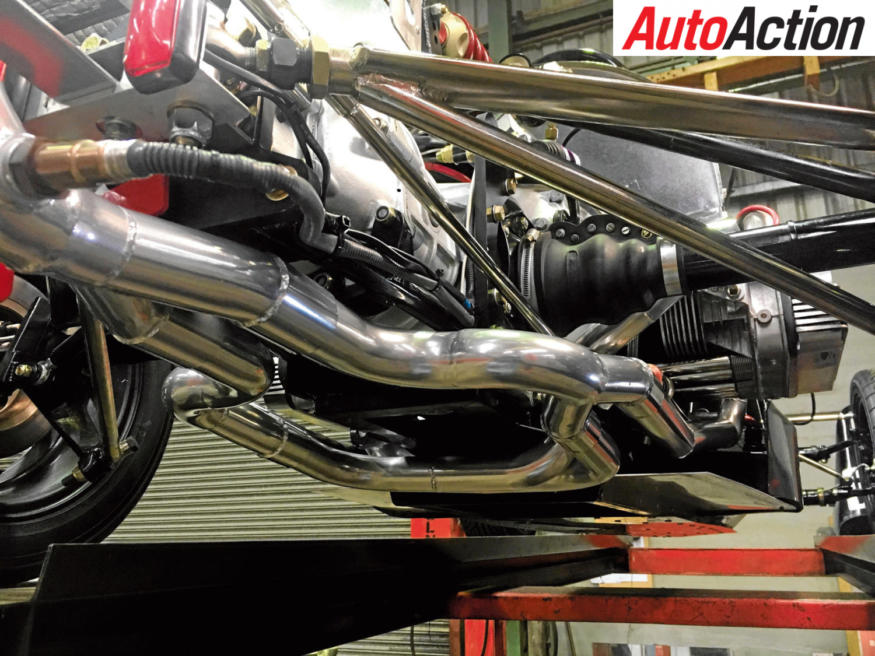
In the lead up to an event generally three to four hours preparation would be ample time to get yourself ready for the race weekend.
“The preparation is quite time consuming, making sure the car is charged up, fuelled, tyres are on and pumped, tools on the trailer and GoPros charged,” Habib explained.
The fuel required is simply any unleaded pump fuel or E10, Vee competitors are split almost 50/50 on which is better.
“Some people use E10 and swear by it and some people run 98 and swear by that. 98 is a lot more convenient especially down at Phillip Island,” Kerr explained.
Habib also runs a Hyundai Excel which is required to run on 98 and for that reason to make life a bit simpler he runs the same in the Vee. Rowe runs E10 because he believes it gives a performance advantage as well as being cheaper to buy.
“I run E10 because it burns hotter so I can make about two more horsepower on E10 if my jetting is right,” Rowe detailed. “Once the event is done and the car is sitting around, you get it out because it is not great for it, whereas 98 you can have sitting around for ages.”
Due to the small engine and the fact it is so light, you will struggle to find a more fuel efficient racing car.
“They don’t use a lot of fuel, they will typically use about 1-1.5 litres per lap, (so) you would use 40-50 litres over a weekend including Friday practice,” Kerr estimated.
Getting to the track is no cash burner either. For a few hundred dollars you can purchase a lightweight trailer that can be towed by an average sized road car.
Each state racing series consists of around five to six rounds, with the cost to enter an event around $400-$450, though including the optional Friday practice it is around $550.
A race weekend generally consists of a qualifying session and one race on the Saturday, followed by two races on Sunday.
A pit garage can also be purchased for extra comfort from anywhere between $200-$500 depending on the venue and the location of the garage itself.
All up for a two day race weekend on average you are looking at spending a minimum of $800-$1000 not including accommodation, which can affect the cost dramatically depending on the location and comfort you desire.
Every third meeting you will more than likely need to spend around $1250 on a new set of tyres and servicing.
It is no wonder that after 55 years this affordable open-wheel category continues to attract good numbers in both in state and national competitions.
VEE NATIONALS

This ever-popular open-wheel category doesn’t just run state series’, there’s an annual national Formula Vee event held every year as well as a national Formula Vee series.
The Formula Vee Nationals is a one-off event that attracts competitors from around Australia with anywhere between 30-55 cars taking part.
The venue rotates each year, with Queensland Raceway hosting the event last year. Phillip Island was scheduled to run it this year but it will now not go ahead due to the COVID-19 situation.
Due to the large numbers at the national event, the 1600cc and 1200cc machines take part in separate races. The format for the national weekend is also unique.
“The event features a heat system. Generally the field is split into four groups A,B,C,D and each driver will compete in three heats which determines grid for the main,” National Formula Vee President Dylan Thomas explained.
The national event generally costs around $600 but this includes a Dinner invitation and some extra track time.
The cost to compete in the Australian national series costs the same as state events, as these run in conjunction with state rounds.
“The way it works is we run off the back of the state series for a number of reasons. One is that it saves money for the competitors, so instead of paying $600 you pay the state fee, but you are also supporting the state series,” he told AA.
“If we go to Sandown in Victoria, for example, we are supporting the Vic State series by them having an extra 20 odd cars on the grid.”
The national series is usually run over four rounds with the worst round result dropped at the end of the season.
COST GUIDE
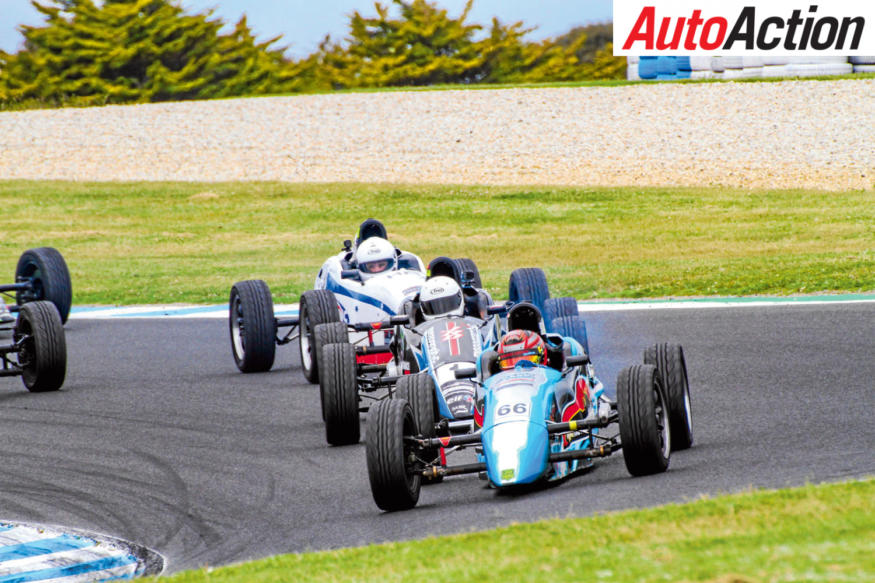
Formula Vee Cost Guide
Entry LEVEL second-hand F-Vee $7500-$15,000
Competitive second-hand F-Vee $15,000-$35,000
New 1600 F-Vee $35,000-$55,000
Engine rebuild top $1200-$1500 (every season)
Engine rebuild bottom $2000-$2500 (every two or three years)
Gearbox rebuild $1200-$1500
Gearbox service $200-$300 (every season)
Muffler $220-$240
H-Beam $500
Entry fees $400-$450 (State level round)


